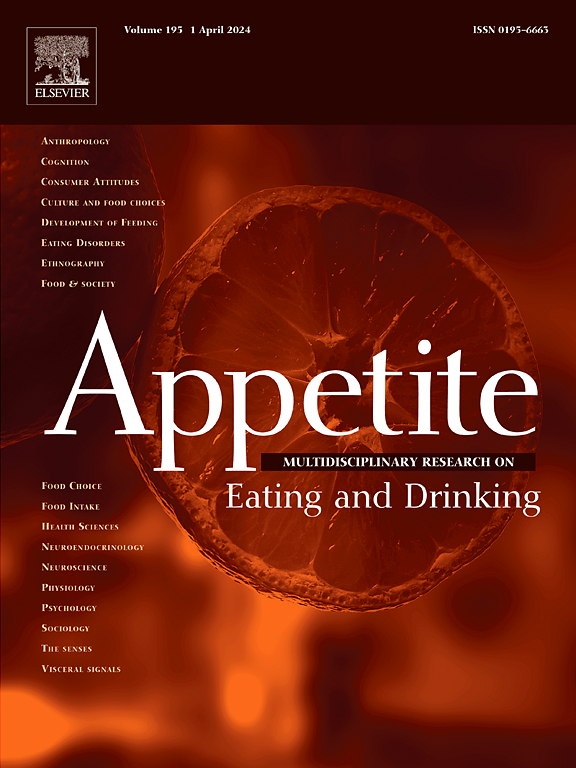暴食症患者对食物刺激的注意:电生理学证据
IF 4.6
2区 医学
Q1 BEHAVIORAL SCIENCES
引用次数: 0
摘要
对食物的注意偏差在暴饮暴食症(BED)的病理学中起着重要作用。后期电生理电位(P300、晚期正电位)是动机注意的有望标记,具有较高的时间分辨率,尽管空间分辨率较低。作为补充,N2pc 是一种较早的时延成分,可以更直接地分析视觉空间注意力。因此,我们在Go/No-Go范式中使用食物和非食物分心图像对患有BED的一组(N = 60)、超重组(OW;N = 28)和无BED的正常体重组(NW;N = 30)进行了测试。只有 OW 组在专门的 Go 试验中对非食物分心物表现出了更强的空间注意分配,N2pc 振幅的增加就是证明。在 P300 的时间窗口中,OW 组没有表现出对食物的注意偏向,而 NW 组只有在没有目标的情况下才表现出这种偏向。只有 BED 组在 "去 "和 "不去 "试验中对食物分心物的注意更积极。在随后的晚期正电位(LPP)中,OW 组表现出对食物分心物的普遍注意偏向,而 BED 组仅在没有目标的情况下才表现出这种偏向。这些结果将根据激励敏化理论和对强干扰物的潜在早期注意抑制进行讨论。本文章由计算机程序翻译,如有差异,请以英文原文为准。
Attention to food stimuli in binge eating disorder: Electrophysiological evidence
Attentional biases towards food play an important role in the pathology of binge eating disorder (BED). Later stage electrophysiological potentials (P300, late positive potential) present promising markers of motivated attention with high temporal, albeit low spatial resolution. Complementing this, the N2pc is an earlier-latency component providing the possibility of more directly analyzing visuospatial attention. Therefore, we tested a group with BED (N = 60), as well as an overweight (OW; N = 28) and normal weight (NW; N = 30) group without BED in a Go/No-Go paradigm using food and nonfood distractor images. Only the OW group in exclusively the Go trials displayed a stronger spatial attention allocation towards nonfood distractors as evidenced by an increased N2pc amplitude. In the P300's time window, the OW group displayed no attentional bias towards food and the NW group only did so in the absence of a target. Solely the BED group allocated more motivated attention towards food distractors both in Go and No-Go trials. In the following late positive potential (LPP), the OW group exhibited a general attentional bias towards food distractors, while the BED group only did so in the absence of a target. These results are discussed in light of the incentive sensitization theory and a potential early attentional suppression of potent distractors.
求助全文
通过发布文献求助,成功后即可免费获取论文全文。
去求助
来源期刊

Appetite
医学-行为科学
CiteScore
9.10
自引率
11.10%
发文量
566
审稿时长
13.4 weeks
期刊介绍:
Appetite is an international research journal specializing in cultural, social, psychological, sensory and physiological influences on the selection and intake of foods and drinks. It covers normal and disordered eating and drinking and welcomes studies of both human and non-human animal behaviour toward food. Appetite publishes research reports, reviews and commentaries. Thematic special issues appear regularly. From time to time the journal carries abstracts from professional meetings. Submissions to Appetite are expected to be based primarily on observations directly related to the selection and intake of foods and drinks; papers that are primarily focused on topics such as nutrition or obesity will not be considered unless they specifically make a novel scientific contribution to the understanding of appetite in line with the journal's aims and scope.
 求助内容:
求助内容: 应助结果提醒方式:
应助结果提醒方式:


